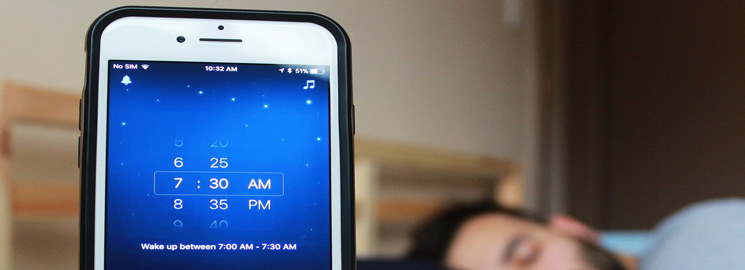Pillows that track your snoozing patterns? A bed that adjusts based on how much you twist and turn? Companies are adding more technology into their products, hoping to lure customers craving a better night’s sleep. Some specialized businesses are making gadgets that promise to measure and improve the quality of slumber, while mass-market retailers are offering simpler ideas like the effect different lighting can have on falling asleep. But with ever-growing options, people may find items that are getting more sophisticated — but may still not be accurate.
What is the research telling us about our sleep patterns?
It could be argued that in many ways our sleep has never been better, in the sense that our sleeping conditions, on average, are far better than they ever were. Once upon a time, your normal worker was probably sleeping in a damp room, sharing a lumpy bed, which was occupied by bed bugs and fleas. Today, we have a very comfortable sleeping environment with pocket spring mattresses, comfy duvets, orthopedic pillows, warm bedrooms.
With that in mind, it can be said that our lives are far busy and stressful than ever and the interest in our sleep has intensified. The number of sleep centres have nearly tripled from 2000 to 2015. Today’s new trend follows a pattern where people are more likely to brag about how much they spent for a mattress than on their clothes. More than anything else, it looks like these days sleep is the new status symbol and it seems like tech companies have jumped all over it.
Would you think tech companies are interested in our sleep?
Because there is so much attention brought to the fact that we spend large amounts of time in front of our devices morning, noon, and night, Apple now implements a feature called “Night Shift” on all of their devices which will automatically adjust the colour of a device’s screen, based on the time of day and where you are. In the evening, for example, the software starts to remove some of the blue light from your screen, which has been shown to affect the body’s natural sleep cycle. Apple says this is easier on the eyes, and may even help you get a better night’s sleep if you spend time at night on your device.
In addition, Apple”s Watch is fully equipped with the necessary hardware (state-of-the-art accelerometer, gyroscope, and heart rate sensors) to estimate sleep patterns during wear. Even though it does not come out-of-the-box with a “baked-in” feature for tracking sleep, you can simply download a third party Apple Watch app available on the Apple App Store to add automatic sleep tracking as a feature to your Apple Watch. So if it’s a feature implemented into the software and hardware of one of the biggest tech companies in the world then it’s a big business.
Other products is on the market include Sleep Number’s 360 Smart Bed, which runs from $3,000 to $5,000. This bed will make adjustments to your sleep position based on how restless people are while they’re sleeping. Finally, the Zeeq pillow, which sells for $299 monitors snoring levels and can gently vibrate to nudge someone into a different sleep position.
So, no question insufficient or lack of quality sleep is a concern and finding solutions using technology seems to be a lucrative enterprise.
Is the money we are spending on these tech items ultimately helping us sleep better?
Most consumer wearable devices are not there in accurately detecting the stages of sleep because they mainly focus on motion, which can be deceptive since a person could be lying in bed awake. That said, the consumer products are getting better and it is my opinion they will be able to accurately monitor and solve sleep issues in the next five to 10 years.


Leave a Reply